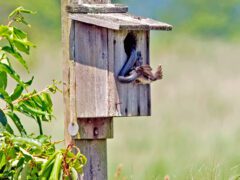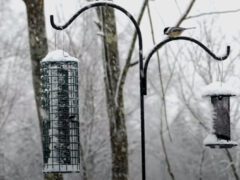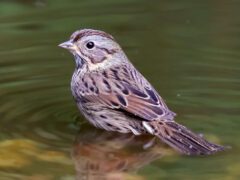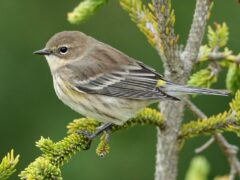A small but sturdy songbird with a fairly full body and thick neck. The bill is thin and straight, smaller than the bill of the similar-looking Connecticut Warbler. It has a moderately long tail and strong legs.
Relative Size
Larger than a Carolina Chickadee, smaller than a Tufted Titmouse.

 sparrow-sized or smaller
sparrow-sized or smallerMeasurements- Both Sexes
- Length: 3.9-5.9 in (10-15 cm)
- Weight: 0.4-0.5 oz (11-13 g)
- Wingspan: 7.1 in (18 cm)
- Length: 3.9-5.9 in (10-15 cm)
- Weight: 0.4-0.5 oz (11-13 g)
- Wingspan: 7.1 in (18 cm)






















































